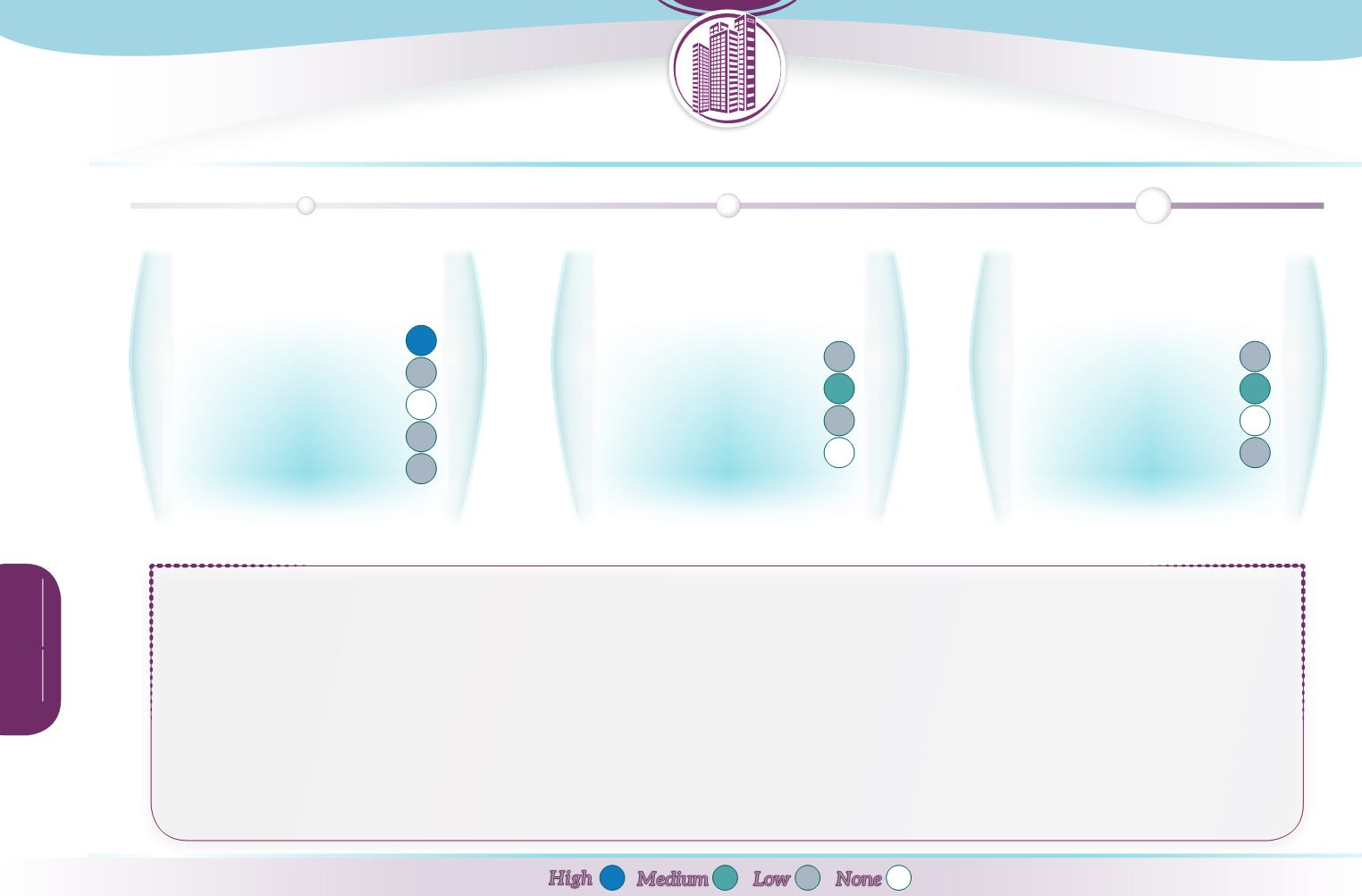
E
cosystem
servicesdelivered
C
ontribution
topolicyobjectives
P
otential
biophysicaleffects
Provisioning
Regulation & maintenance
Cultural
Abiotic
Water Framework Directive
Floods Directive
Birds & Habitats Directive
2020 Biodiversity Strategy
Runoff
Reducing pollution
Soil conservation
Habitat
Climate Change
High
Low
Medium
None
Increased
evapotranspiration
occurs as a result of introduction of vegetation to an otherwise hard surface, and contributes to reducing runoff.Well designed, green roofs are
effective at
reducing peak flow
from frequent, less extreme rainfall events, thereby contribute to
flood riskmanagement
. Their effectiveness may vary between 5 to 95%
reduction in runoff, depending on substrate type and depth, antecedent conditions, season, rainfall intensity and volume.
As green roofs can make localised contributions to water quality of runoff, they have potential to contribute towards improved physico-chemical quality elements and
chemical
status
as a source-control component in an effective sustainable drainage system. They can help to prevent surface water status deterioration.
When widespread across an urban area, green roofs may contribute to improvements to air quality, lower air temperatures and higher humidity levels, thus assisting with
climate
regulation
. They can potentially contribute to carbon sequestration.
Although the biodiversity of the vegetation on green roofs may be low or managed, it is greater than for a hard roof. Green roofs are an example of green infrastructure, with
the potential to assist with ecological
habitat connectivity
.
The introduction of green spaces to urban areas finally contributes to
aesthetic benefits
: intensive green roofs are designed for small-scale
domestic/amenity/recre-
ational
use.


